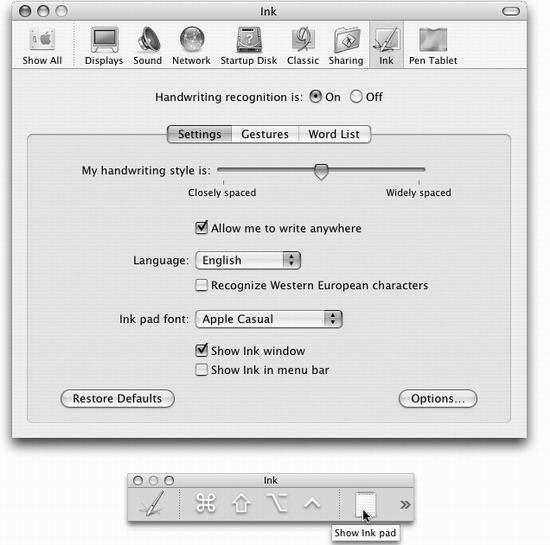Ink: Handwriting Recognition
In the same way that your grandmother turned yesterday’s dinner into today’s sandwich (and tomorrow’s soup), Apple recycled the handwriting technology of its failed Newton handheld and added it to Mac OS X. It’s now called Ink, and it does exactly what it used to: turns your handwriting into “typed” text in any program.
You can’t very well write directly on your Apple Cinema Display (although that would be cool—Apple, are you listening?). That’s why Ink appears in Mac OS X only if you have a graphics tablet, one of those stylus-and-pad devices found generally only on the desks of graphic artists. (Wacom is the best-known tablet company, but there are a couple of others.)

Figure 14-14. Top: Most people never see the Ink panel of System Preferences, since it appears only when you install a Wacom graphics tablet. Bottom: You can shrink the Ink toolbar down to a small square by clicking on the zoom button (Section 1.2.3), or expand it to include the Ink pad by clicking the notepad icon at the toolbar’s right.
Can Ink really replace the keyboard? Not for anything more than quick notes, that’s for sure. But it can be handy when you’re Web surflng, sketching, fllling in database forms, and so on.
Write Anywhere
The Ink panel appears in System Preferences only after you’ve installed a tablet and its software driver.
Once you’ve done so, open System Preferences and click ...
Get Mac OS X: The Missing Manual, Panther Edition now with the O’Reilly learning platform.
O’Reilly members experience books, live events, courses curated by job role, and more from O’Reilly and nearly 200 top publishers.

